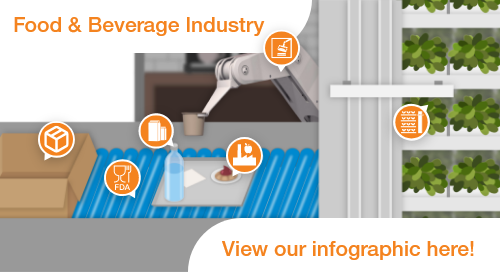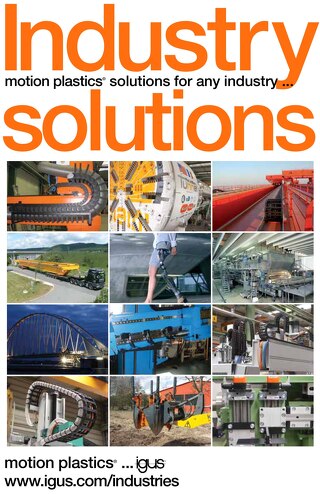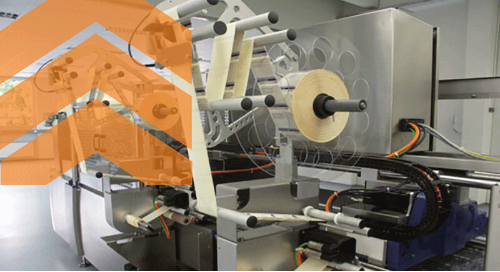Why Are Plastic Components Ideal for the Packaging and Food Industries?
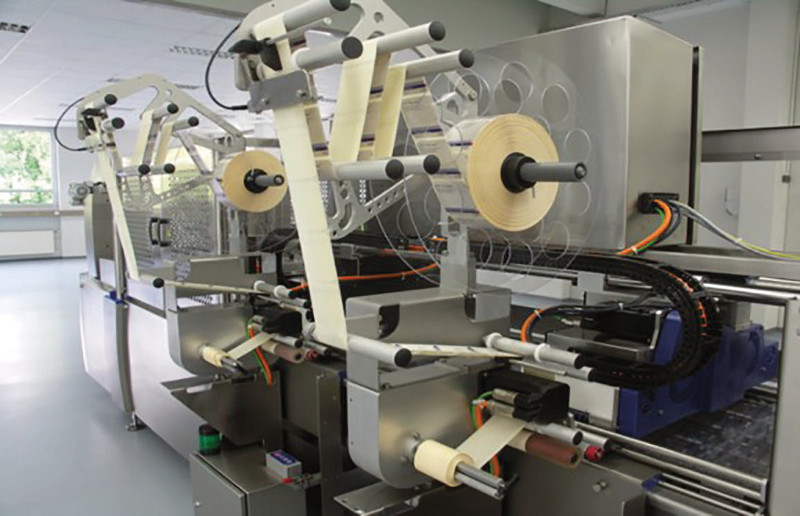
Bearings are on just about every machine imaginable in the packaging industry: tray sealing, dosing, cartooning, form fill and seal, tubular bagging, and sleeving and wrapping applications, just to name a few. So it is easy to see how machine builders and designers, whether for general packaging or the food and beverage industry, could bite-off more than they can chew when it comes to bearing selection.
One option to consider is engineered plastic components. They don’t require external lubricants, resist dirt, dust and corrosion, and are maintenance-free. Read on to learn more about the advantages of plastics and where you can use them inside your application.
Why Plastic Components?
The applications for plastic bearings, lead screws and linear guides in the packaging industry are endless, and for good reason! A few benefits that help drive the demand for alternatives to metal or greased solutions include the following:
- Low contamination risk due to dry-running, maintenance-free solutions and the absence of wet lubricants like oil or grease.
- Chemically inert options that do not corrode, degrade, rust or oxidize.
- Predictable lifetimes to plan maintenance operations and reduce downtimes.
- Extremely media resistant to both chemicals during washdowns and debris from packaging/processing
Each of these benefits makes plastic components ideal for applications within the food and packaging industries.
Where Inside Applications are Plastic Parts Commonly Used?
General Format Adjustments
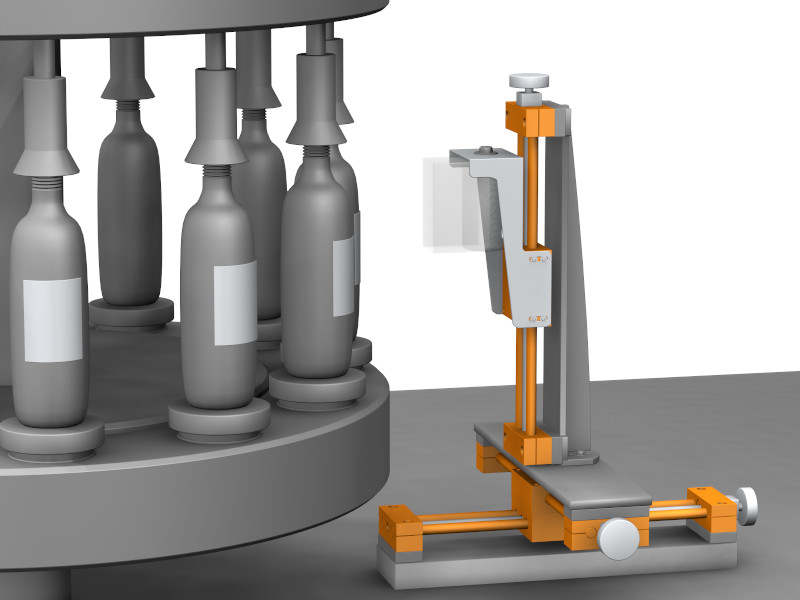 There are a ton of applications for general formatting in the packaging industry, such as sensor/camera adjustments or lane/width adjustments. The market is growing and demanding more flexibility from its machine users. By incorporating these types of one-piece solutions into machinery and equipment, you can now expand the size and variety of products that can be run on the same manufacturing line. This increases throughput and reduces downtime for switchover. From simple, single-axis lead screw tables that are driven via a handwheel to fully automated belt-drive systems for fast multi-axis adjustments, maintenance-free polymer linear guides and actuators provide cost-effective solutions for meeting the demands of expanding machine flexibility.
There are a ton of applications for general formatting in the packaging industry, such as sensor/camera adjustments or lane/width adjustments. The market is growing and demanding more flexibility from its machine users. By incorporating these types of one-piece solutions into machinery and equipment, you can now expand the size and variety of products that can be run on the same manufacturing line. This increases throughput and reduces downtime for switchover. From simple, single-axis lead screw tables that are driven via a handwheel to fully automated belt-drive systems for fast multi-axis adjustments, maintenance-free polymer linear guides and actuators provide cost-effective solutions for meeting the demands of expanding machine flexibility.
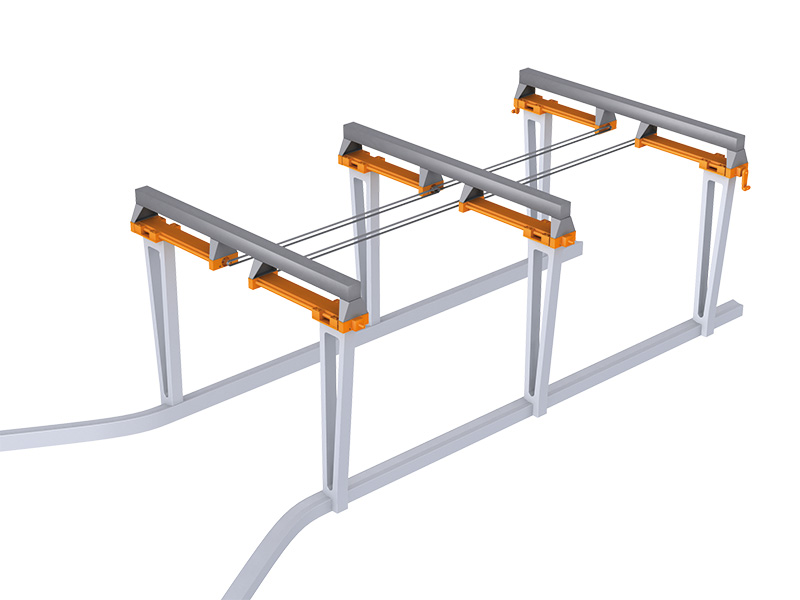 Applications like this are often “quasi-static,” meaning they may move only a few times a day instead of moving constantly. If using a solution that employs external grease for lubrication, the end-user cannot be sure that the grease has not gone anywhere since the last time it was moved. The grease can dry up or pool in a location, for example. However, this is not an issue with plastic linear bearings/guides. Due to the embedded solid lubricants, you can be sure that your coefficient of friction isn’t going to be changing. This ultimately results in a more consistent product with no maintenance requirements.
Applications like this are often “quasi-static,” meaning they may move only a few times a day instead of moving constantly. If using a solution that employs external grease for lubrication, the end-user cannot be sure that the grease has not gone anywhere since the last time it was moved. The grease can dry up or pool in a location, for example. However, this is not an issue with plastic linear bearings/guides. Due to the embedded solid lubricants, you can be sure that your coefficient of friction isn’t going to be changing. This ultimately results in a more consistent product with no maintenance requirements.
Dosing and weighing: Plastic bushings and self-aligning bearings can also be found on virtually all pivot-points within a dosing and weighing system for un-packaged products. The types of bearings in these systems can vary drastically based on design, whether it be flange bushings, clip bushings, rod ends, and the list goes on. Implementing these products allows for a host of performance improvements.
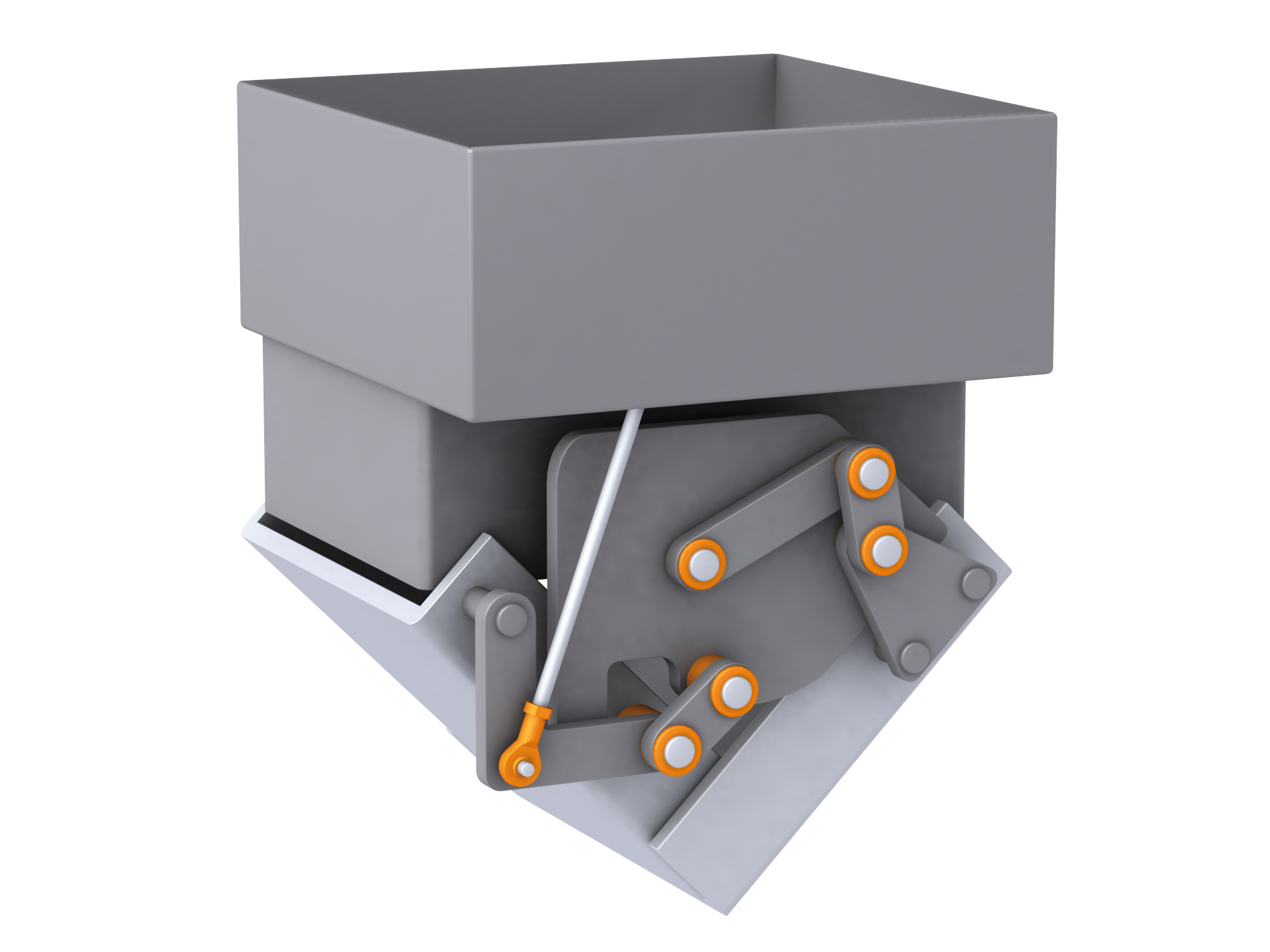 Polymer solutions offer greater vibration damping. Also, it is common to see aggressive chemicals in these machines for cleaning and sanitization. Choosing a polymer bearing allows for the use of softer and more corrosion-resistant stainless steels in the shafting material, ultimately reducing maintenance. Polymer rod ends and bearings also provide unparalleled resistance to powdered media. Powdered products are often fed through systems such as these. Having a product with no external lubrication allows for longer lifetimes and smoother operation.
Polymer solutions offer greater vibration damping. Also, it is common to see aggressive chemicals in these machines for cleaning and sanitization. Choosing a polymer bearing allows for the use of softer and more corrosion-resistant stainless steels in the shafting material, ultimately reducing maintenance. Polymer rod ends and bearings also provide unparalleled resistance to powdered media. Powdered products are often fed through systems such as these. Having a product with no external lubrication allows for longer lifetimes and smoother operation.
Labeling: Labeling is a very common area in many packaging operations where alternatives to traditional sealed roller bearings can excel. All of us have seen a labeling operation such as the one shown below where there is roller after roller creating a trapeze of labeling media. This intricate system needs to be reliable!
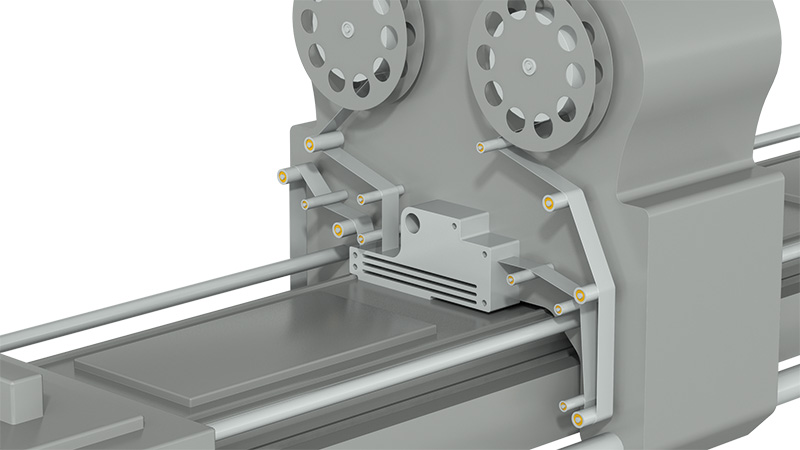 Alternatives to sealed metal rollers, such as our xiros® guide rollers, offer the ability to produce more consistent rolling products due to their integrated solid lubrication. Additionally, a softer stainless boosts corrosion resistance. All of this is achieved with cost savings and lower inertia (compared to bushings).
Alternatives to sealed metal rollers, such as our xiros® guide rollers, offer the ability to produce more consistent rolling products due to their integrated solid lubrication. Additionally, a softer stainless boosts corrosion resistance. All of this is achieved with cost savings and lower inertia (compared to bushings).
However, rollers are not the only polymer product taking over the labeling industry. Polymer bushings, compact linear slides, and polymer lead screw nuts have also seen extensive use in formatting and short stroke applications for labeling equipment.
Tubular Baggers: Form, fill, seal, repeat. When it comes to applications with polymer bearings and linear systems, tubular bagging machines can benefit from a wide variety of polymer wear components. These types of machines need to run like clockwork and are some of the most efficient machines in a given facility. This means that they need to run smoothly with no unplanned downtime. One way to maximize the maintenance-free operation of these machines is to convert them over to using polymer bearings.
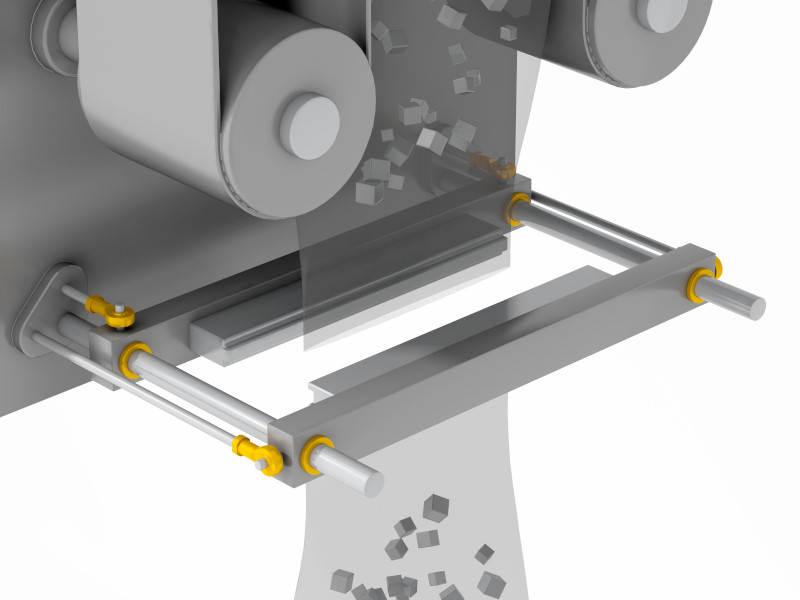 Polymer bearings are commonly found in the welding bar on these machines. Whether the machine is set up vertically or horizontally, the process of actuating and guiding the sealing head is what polymer solutions are well suited for. Compared to their metal or roller counterparts, higher cycle rates can be achieved without fear of damaging the shaft. This leads to reduced downtimes, as maintenance can be more accurately planned. Additionally, the only wear component would be the bearing and not the shaft. This is not something a traditional bearing can promise, especially in the dirty environments associated with bagging powders, pellets, flakes, fibers, etc. At the end of the day, guidance can be accomplished with standard or self-aligning pillow blocks using polymer liners, like our drylin® R series of guides. Additionally, synchronous transmission of the welding bar is crucial for smooth operation. This can easily be done by using rod ends or clevis joints. For a schematic of this type of application, refer to the image below.
Polymer bearings are commonly found in the welding bar on these machines. Whether the machine is set up vertically or horizontally, the process of actuating and guiding the sealing head is what polymer solutions are well suited for. Compared to their metal or roller counterparts, higher cycle rates can be achieved without fear of damaging the shaft. This leads to reduced downtimes, as maintenance can be more accurately planned. Additionally, the only wear component would be the bearing and not the shaft. This is not something a traditional bearing can promise, especially in the dirty environments associated with bagging powders, pellets, flakes, fibers, etc. At the end of the day, guidance can be accomplished with standard or self-aligning pillow blocks using polymer liners, like our drylin® R series of guides. Additionally, synchronous transmission of the welding bar is crucial for smooth operation. This can easily be done by using rod ends or clevis joints. For a schematic of this type of application, refer to the image below.
Wrapping Up (See what I did there?)
This is only the tip of the iceberg when it comes to engineered plastic components in the packaging industry, but knowing the most common applications is a good place to start. And don’t forget about their benefits below, which can enhance the performance of your machine while saving you money overtime:
- Constant coefficient of friction for predictable lifetimes and reduced downtimes
- No contamination risks from external lubricants
- Resistance to media from foods, beverages or packaging media/fibers
- Corrosion resistance and chemically inert for washdowns
- Cost-effective
If you are interested in some of the applications, products, or want to learn more about igus® and our success in the food and packaging industries, visit our website or check out our packaging brochure. Or, if you are interested in speaking with an expert about plastic linear guides and bearings, contact John R. Nebbia, Packaging Industry Manager – dry-tech® Division.

